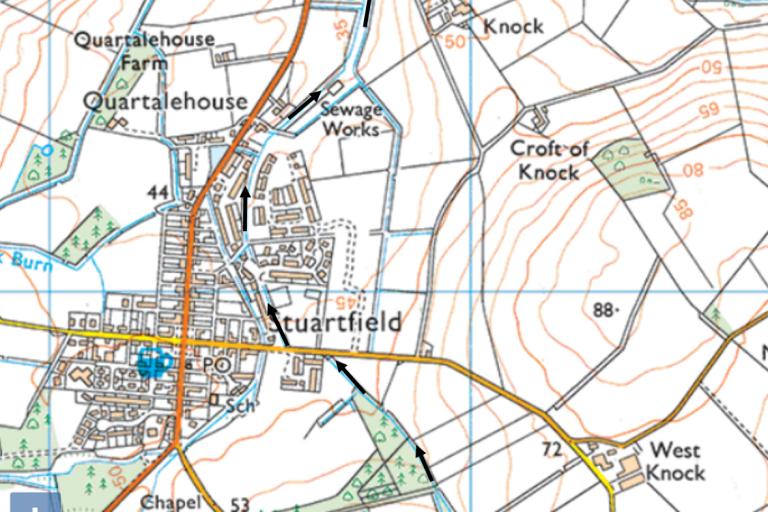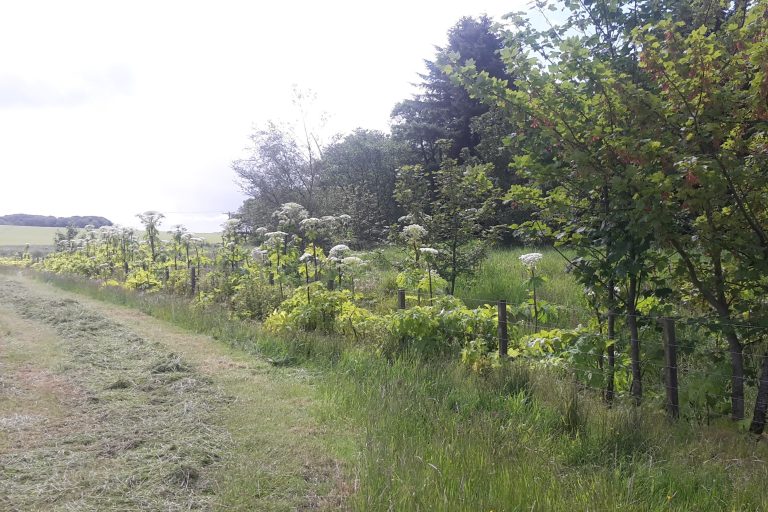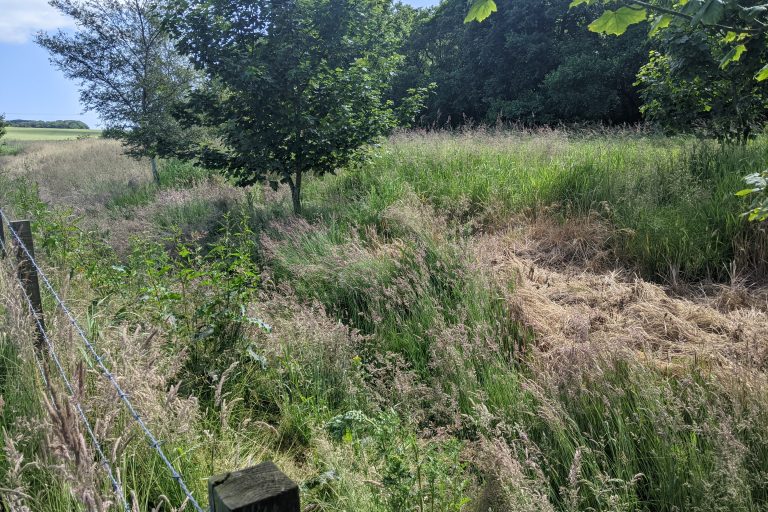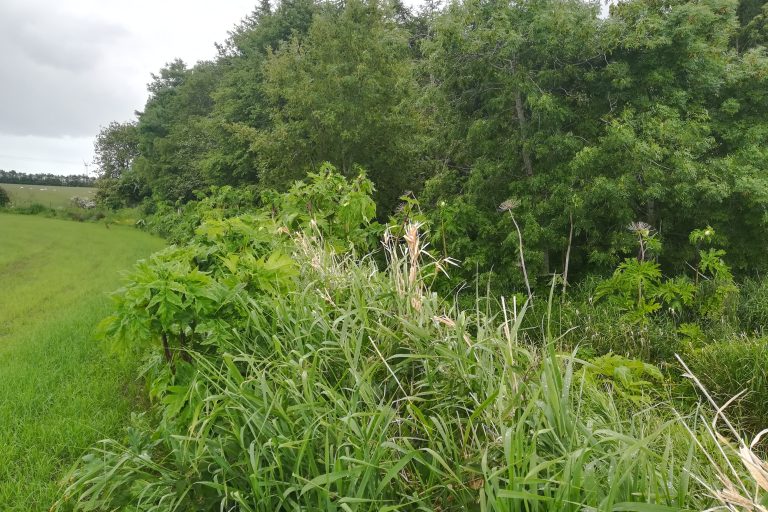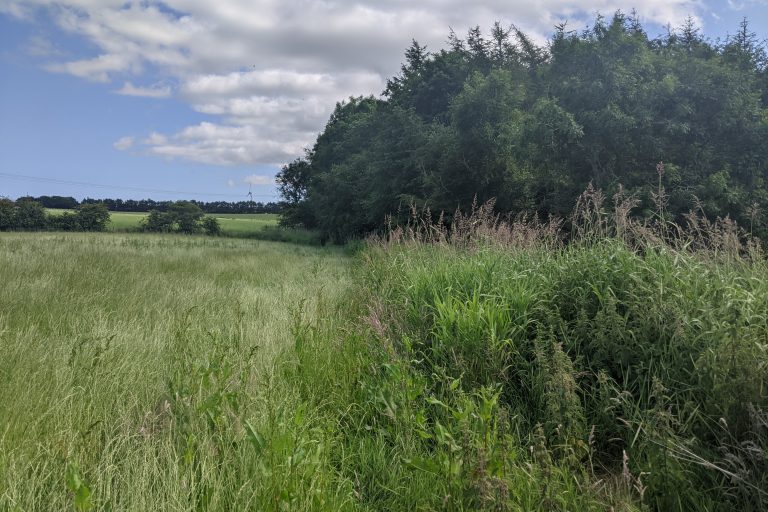Summary
The Stuartfield Burn is a tributary of the South Ugie Water running through the village of Stuartfield in Aberdeenshire. In 2018 the site was identified as the most upstream point of giant hogweed on the burn and a potentially significant seed source of giant hogweed infestations downstream to the South Ugie Water. Giant hogweed had become established around Stuartfield and was outcompeting native vegetation, increasing the risk of bank erosion and posing a human health hazard. Control was needed to prevent further spread of the plant around the village and limit seed dispersal into the South Ugie Water.
Working with landowners and volunteers, the Scottish Invasive Species Initiative managed giant hogweed control at this site from 2018-2021. Approximately 2.2km of river length was covered, totalling 4.4km of riverbank. This work has significantly reduced the abundance of giant hogweed on the site and, consequently, the time and chemical volume necessary for annual control.
In 2022, the Scottish Invasive Species Initiative intends to discuss the handover of management at the site to local landowners so that control can continue there after the project ends in October 2022. Project staff will continue to monitor the site and provide advice and support when needed. Encouraging progress has been made but monitoring and control work will be needed for several years to eradicate the plant, exhaust the seedbank at the site and prevent further spread of seeds downstream into the South Ugie Water.
1. Site description
The Stuartfield Burn site is a 2.2km stretch of burn running through Stuartfield village in Aberdeenshire (see Map 1 below). Land use is varied along the banks and includes residential gardens, pastures, unimproved grassland and conifer plantation.
The upper limit of the site starts above West Knock Farm (grid reference: NJ 98144 45195) and ends at the confluence with the South Ugie Water (grid reference: NJ 97910 46830). Ownership is shared by a number of individuals – with no single owner having overall responsibility of the site. In total, giant hogweed has been controlled on approximately 4.4km of riverbank, covering both banks of the 2.2km river section.
Within the Scottish Invasive Species Initiative partnership, the Ugie catchment is covered by the Deveron, Bogie and Isla Rivers Charitable Trust.
